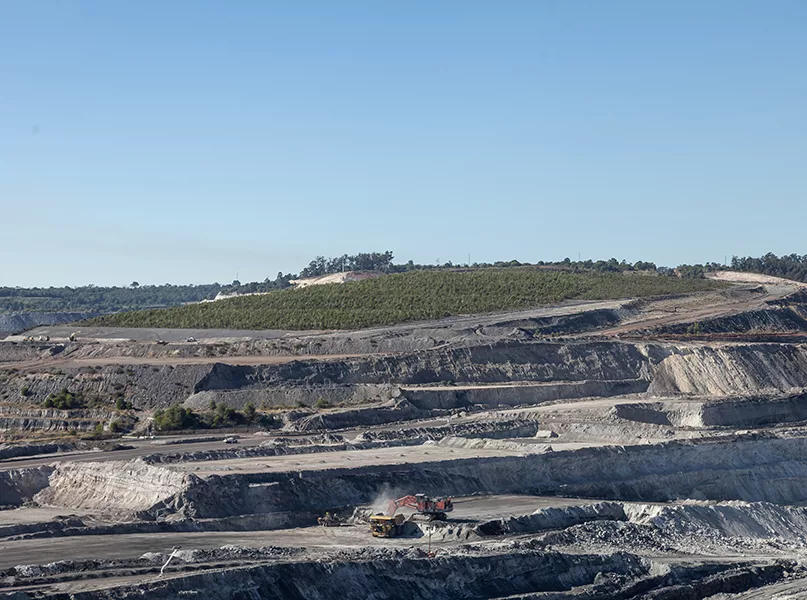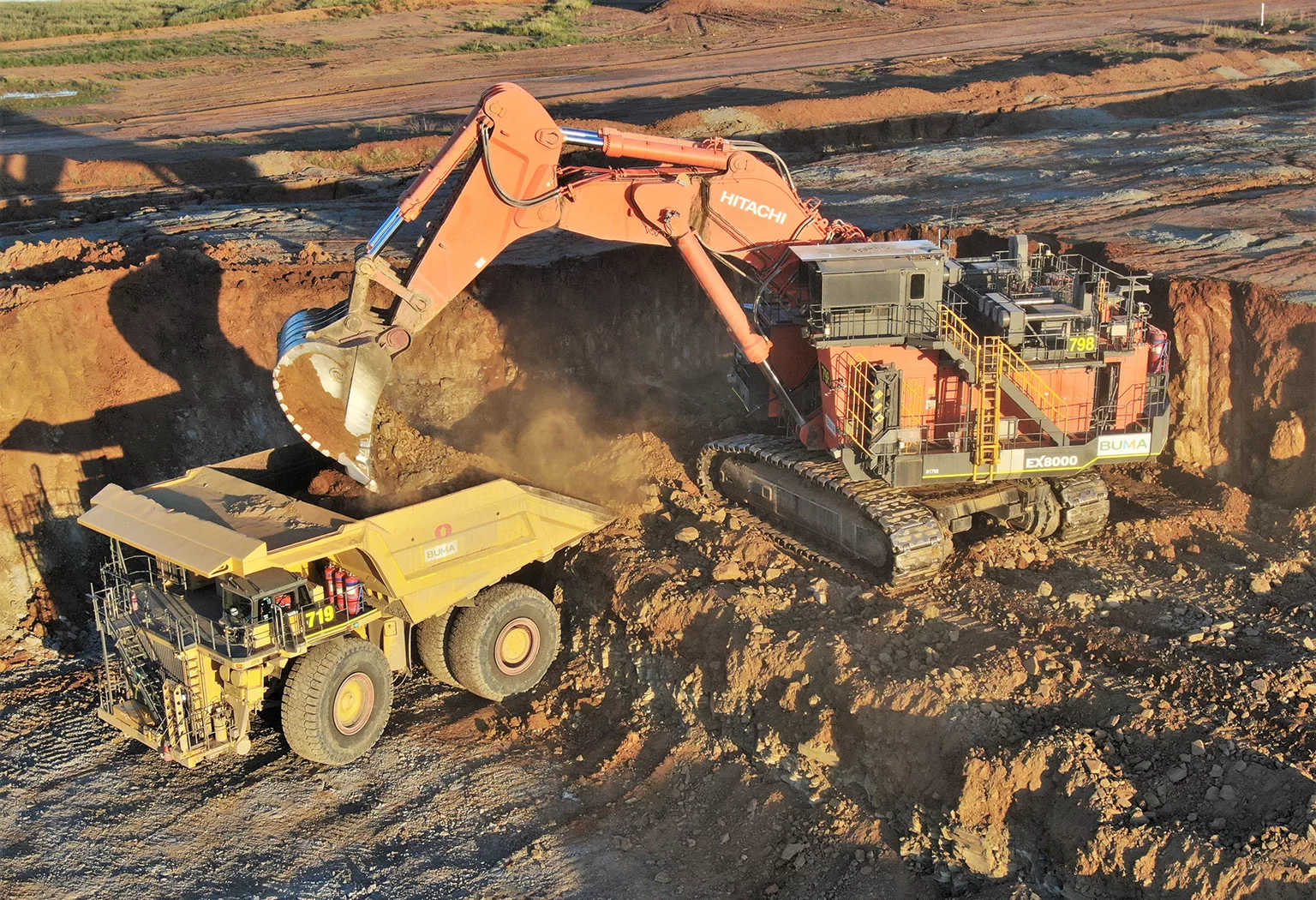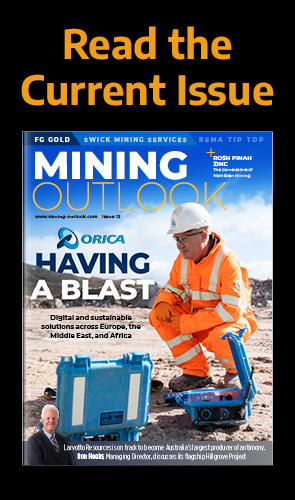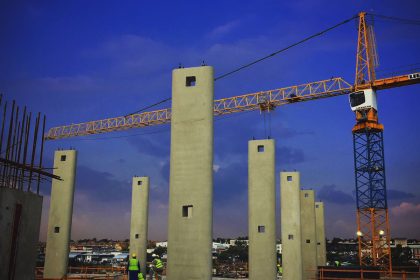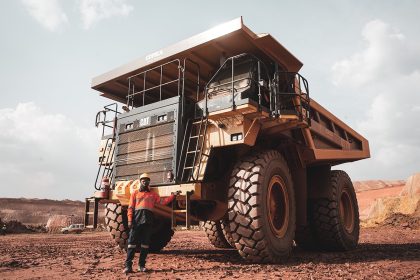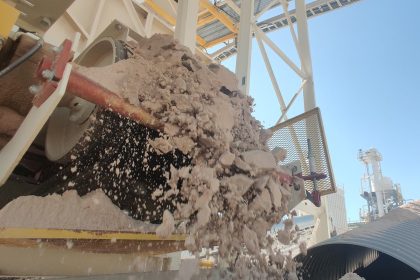BUMA AUSTRALIA: DELIVERY AND COMMITMENT
BUMA is an established mining services provider currently operating several long-term contracts within Queensland. The company has been providing mining services for 75 years and has established, numerous long-term relationships within the industry.
BUMA’s current contracts are diverse, tailored to suit client requirements, encompassing a range of services from full mine operation, pre-strip, coal mining, processing plant maintenance and operation, and statutory management, as well as incorporating activities from greenfield development to closure and rehabilitation services.
With a strong commitment to safety, systems and technology, BUMA pursues a relationship-based, long-term approach to ensure the mutual success of all its projects.
“The key to our continued contract success comes from our focus on delivering services to meet evolving client needs, using a flexible and adaptable approach,” Taylor remarks.
“Our strength lies in our people, with an experienced and diverse workforce of over 1,500 individuals, who conduct new-to-industry training programmes.”
Further to this, BUMA’s operational capabilities and technical services include mine planning, dozer push, dragline operation, load and haul operations, wash plants, and drill and blast across seven different sites.
BUMA also provides full mining services, including statutory roles, at both the Broadmeadow East and Burton mines. In addition to the Bowen Basin, the company has also provided full mining services, which include statutory roles and coal delivery to power stations at the Meandu mine for the last 10 years, as well as the Commodore mine for over two decades.
Underpinning every facet of the business, BUMA has established a set of core values that are applied daily throughout the business, and with a well-established history of successfully completing rehabilitation and environmental projects, BUMA now offers a full suite of services from mine development through to closure, including progressive rehabilitation as the mine advances.
“We have key operational sites that are actively working under Progressive Rehabilitation and Closure Plan (PRCP), which provides us with first-hand knowledge of rehabilitation delivery requirements under this new regime.”
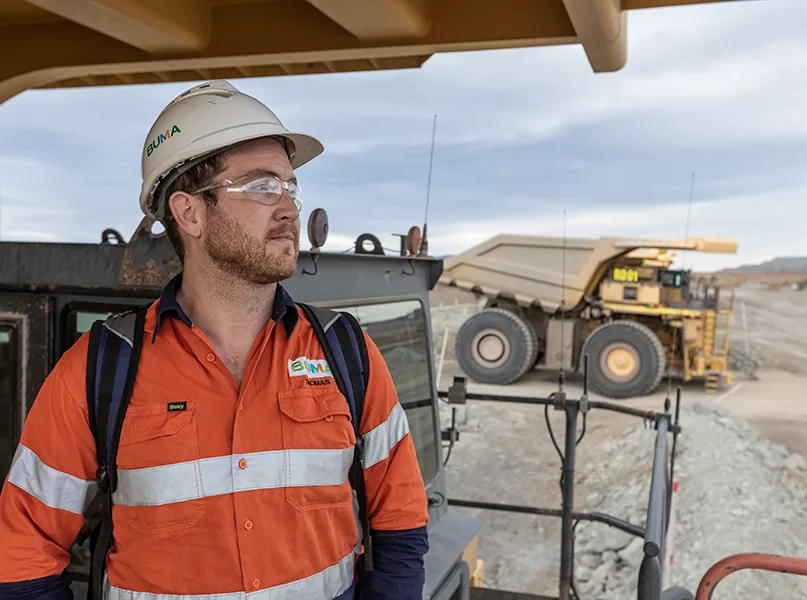
“The key to our continued contract success comes from our focus on delivering services to meet evolving client needs using a flexible and adaptable approach”
Russell Taylor, COO, BUMA Australia
BLACKWATER MINING PROJECT
One of the operations that BUMA is most proud of is the Blackwater Mine, which is situated in the Central Highlands of Queensland, known for its mining heritage and substantial coal deposits.
Blackwater is one of BUMA’s most established and successful projects, showcasing efficient operational practices, along with a steadfast commitment to safety, community, and our team.
As such, BUMA has been conducting truck and excavator pre-strip operations at Blackwater since 2012. Each year, the company’s fleets mine over 44 million banked cubic meters of material. To facilitate the efficient movement of this material, BUMA operates and maintains a substantial equipment fleet, which includes a Hitachi EX8000 excavator, three Caterpillar 6060 excavators, and a Hitachi EX3600 excavator. These are further supported by 28 Komatsu 930E and CAT 789 haul trucks.
Led by Project Manager, Freya Perrins, Blackwater’s success is a testament to the collective strength and expertise of its diverse and seasoned workforce. The Blackwater project’s established training department oversees the site’s new-to-industry programmes such as the First Nations work readiness initiative that has been operating since 2016.
The purpose of the work readiness initiative is to provide an introduction to mining life and offer helpful advice on potential career pathways in the industry. The programme covers topics that employees will face on a day-to-day basis to help assist those who are new to the mining sector or even the BUMA workforce.
Overall, this has had great success in preparing new-to-industry operators to be successful in securing full-time positions in the company.
“Diversity is a valued part of BUMA’s employment approach, and we are committed to fostering a diverse and inclusive workplace that facilitates opportunity and respect,” Perrins tells us.
“Our focus on cultural inclusiveness is active and ongoing, and we are continually working to build our organisational culture with a focus on enhancing workforce diversity,” he establishes.
BUMA’s relationship with the community is a significant component of its business and the company’s reputation as a valued corporate citizen and community-conscious organisation has been achieved by consistently working closely with its neighbours. Subsequently, BUMA is committed to continuously implementing this across all its projects.
The future of the company will depend on its ability to maintain its social license to develop, operate, and close mines consistently alongside its stakeholders’ expectations.
“At Blackwater, we highly value our community and continuously seek opportunities to assist both individuals and local businesses. This support extends to local goods and services procurement, as well as offering ongoing financial assistance to various local initiatives, including the Tiny Tots Kindergarten Centre, local youth football teams, and the Blackwater Police Citizens Youth Club (PCYC) Braking the Cycle (BTC) programme,” she adds.
Conclusively, the Blackwater Mine has consistently maintained a high level of operational efficiency and a strong commitment to safety standards. This achievement has been made possible through BUMA’s people, technology, and thorough safety measures.
“Our focus on cultural inclusiveness is active and ongoing and we are continually working to build our organisational culture, with a focus on enhancing workforce diversity”
Russell Taylor, COO, BUMA Australia
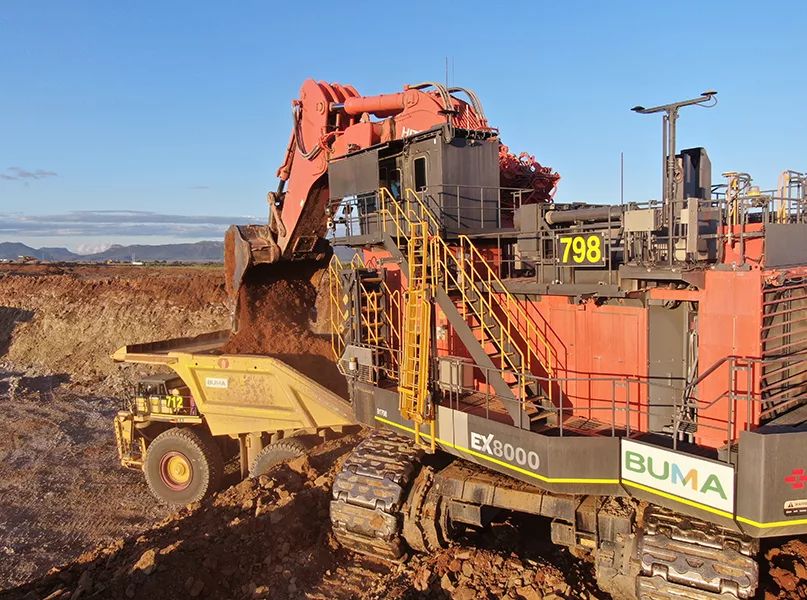
REHABILITATION PROJECTS
It has become a significant focus for BUMA to carry on delivering exceptional service in collaboration with its clients, BUMA recognises that there has been a significant investment into technical resources to develop rehabilitation and closure plans across the Australian mining industry. As such, the delivery of works in accordance with these requirements is paramount.
“We aim for long-term stable and sustainable landforms, with our focus firmly set upon efficiency in earth movements right from bulk earthworks through to the ongoing management and maintenance of completed areas,” Taylor comments.
“This, supported by our quality control and evidence-based monitoring processes, ensures that we support our clients in equally meeting their scheduled physical delivery and statutory reporting outcomes,” he furthers.
Today, rehabilitation activities at Stanwell’s Meandu Mine commence as soon as areas become available, with over 930 hectares (ha) of native vegetation rehabilitation already completed across the site.
This year, the Meandu site is aiming to achieve an additional 41.5 ha of native vegetation rehabilitation. Significant work has already occurred, with the land profiled, topsoiled, and seeded earlier this year. Previously, during 2022, BUMA successfully completed 28.7 ha of native vegetation rehabilitation across the Meandu Mine.
“Our native vegetation rehabilitation areas, designed to meet the final post-mining landform, exemplify our commitment to safety, stability, sustainability, and adherence to environmental regulations,” Tranter shares.
“To ensure the project’s success, we thoroughly follow government regulations, incorporating specific design elements such as gradients, cover materials, and drainage systems.”
Similarly, BUMA also designed and constructed a network of rock-lined drains, utilising basalt rock sourced from the mine, to manage the overland flow and mitigate the risk of erosion.
“We place topsoil across the entire rehabilitation surface, drawing from on-site topsoil stockpiles that are assessed for quality, ensuring optimal performance for native vegetation rehabilitation. To reduce the compaction of the cover material, we employ a single-pass method, which included the processes of fertilisation, ripping, and seeding,” he continues.
BUMA is committed to restoring the environment to its natural state, a promise that extends to its choice of seeds. Over 600 kilograms (kg) of seeds, comprising a diverse mix of species of trees, shrubs and grasses mirroring the local regional ecosystem, are spread across the rehabilitation site.
As such, BUMA source 25 different native seeds from a local supplier, further enhancing the project’s authenticity. In addition, the seed mix incorporated grasses, serving as a cover crop to facilitate the establishment of native vegetation.
“Among the species we have reintroduced to the Meandu Mine area is the Yarraman Ironbark (Eucalyptus crebra), a native variety indigenous to the region, as well as the Native Apricot (Pittosporum angustifolium), and the Brisbane Golden Wattle (Acacia fimbriata).”
BUMA’s unwavering commitment to conducting high-quality and progressive rehabilitation projects remains at the core of its central values.
“We are dedicated to ensuring the sustainable and responsible transformation of mining areas back to their natural state, embodying our commitment to the environment and community,” finishes Taylor.

COMMODORE BACK CREEK DIVERSION
BUMA’s Commodore Mine is located in a sensitive agricultural region close to the farms and township of Millmerran.
At this site, BUMA works closely with the local community to operate a safe and environmentally-responsible mining operation. Dust, excessive noise, and blasting restrictions are managed to ensure minimal impact, while special attention is also placed on the rehabilitation of the post-mine landform.
The post mine landform must be capable of supporting long-term primary industries, such as grazing. Furthermore, the site’s water management is achieved through the use of contour banks, sediment traps, and dams, separating mine run-off water from clean water in accordance with the Site Water Management Plan.
“Environmental sustainability solutions have been applied to all aspects of the mine’s operations, including water recycling, waste management, and rehabilitation. The project is self-sufficient in its water use and prioritises best practice rehabilitation practices that minimise disturbance and protect rare grass species,” Taylor shares.
Additionally, the Commodore Back Creek Diversion Project is an earthworks civil construction operation designed as a meandering creek bed, comprising floodplains, terraces, and a clay-lined, low-flow channel. It has been constructed within the overburden and backfilled for rehabilitation of previously mined-out coal seams.
The work involved the excavation and the localised placement of 30 ha of floodplain and terraces. The primary activity for BUMA was the excavation and placement of a thick liner to form the low-flow channel. This was required to be placed, compacted, and tested to a highly intricate level of accuracy. The project scope also required topsoiling, vegetation, installation of timber habitat, and embankment construction for interim flood levees.
The project required a complete quality assurance programme to ensure all statutory regulations and environmental requirements were achieved to the highest standard.
The Commodore Back Creek Diversion Project attracted attention from a range of stakeholders, including heritage considerations, local community members, and multiple government departments.
Finally, the project was self-sufficient in its water use and innovative rehabilitation practices were prioritised throughout to restore disturbed areas, recreate the original landform, and ensure strict adherence to reinstating original tree and grass species for the area.
